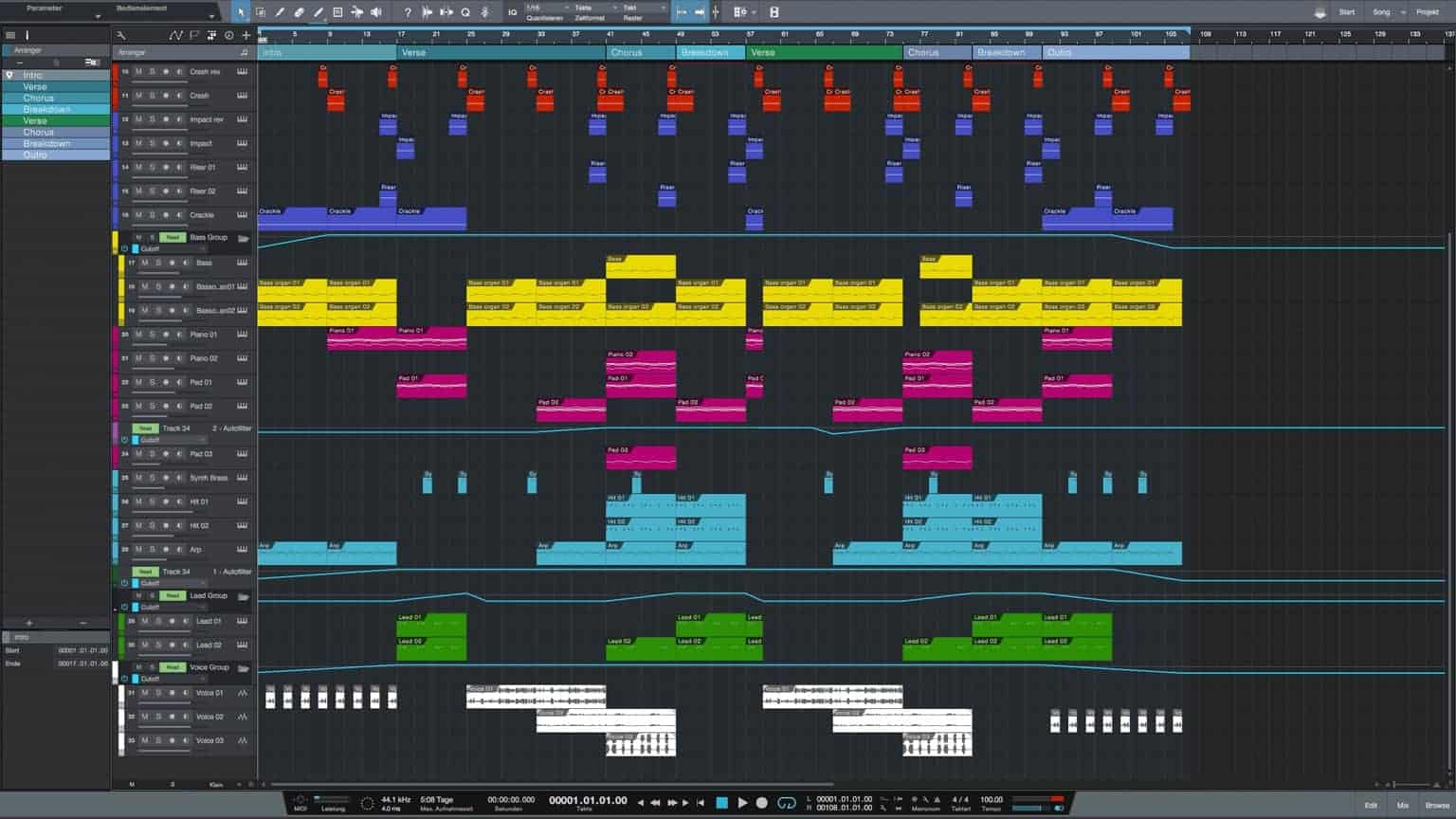
Bitwig Studio 16-Track download for Windows, macOS, and Linux. COMPARE EDITIONS Bitwig Studio 16-Track is the perfect starting point, it includes the essential tools to record and arrange, edit and create. Fab Filter Pro Q3. This is such an easy EQ to use. The Fab Filter Pro Q3 is the one I would spend my.

Bitwig Studio 3.2 Arranger Window with devices below | |
| Developer(s) | Bitwig GmbH |
|---|---|
| Initial release | 26 March 2014; 7 years ago |
| Stable release | |
| Written in | C++,[1] Java |
| Operating system | Microsoft Windows, macOS, Linux |
| Type | Digital Audio Workstation |
| License | Proprietary |
| Website | www.bitwig.com |
Bitwig Studio is a proprietary digital audio workstation developed by Bitwig GmbH. Bitwig is available for Linux, macOS, and Windows. Bitwig is designed to be an instrument for live performances as well as a tool for composing, recording, arranging, mixing, and mastering. It offers a suite of controls for beatmatching, crossfading, and other effects used by turntablists. Bitwig supports both traditional linear music arrangement and non-linear (clip-based) production. It has multi-monitor and touch screen support. Bitwig is notable for its strong modulation,[2] and automation capabilities.[3] The current stable version of Bitwig is 'Bitwig Studio 3.3'. The latest major release, Bitwig Studio 3.0, was released on 10 July 2019. In 2017, Bitwig Studio was named DAW of the year by Computer Music (magazine).[4][5]
History[edit]

Bitwig was founded and developed in Berlin by Claes Johanson, Pablo Sara, Nicholas Allen and Volker Schumacher in 2009.[6] Since 2010, Placidus Schelbert has been the CEO after he left his position as an International Sales Manager at Ableton, in the same year.[7]
Features[edit]
Effects [8]
| Audio Effects | MIDI Effects | |
|---|---|---|
|
|

See also[edit]
References[edit]
- ^'Sascha Gehlich'. www.facebook.com.
- ^Rothwell, Nick. 'Bitwig Studio 2'. www.soundonsound.com.
- ^Staff. 'Bitwig Studio review'. MusicRadar.
- ^'Bitwig | News | Daw of the Year'. www.bitwig.com.
- ^'DAW of the Year - Winner - Bitwig Studio 2'. Computer Music. No. 251. United Kingdom: Future Publishing. January 2018. p. 65.
- ^'BITWIG – About us'. 7 August 2011. Archived from the original on 7 August 2011.
- ^https://www.linkedin.com/in/placidusschelbert/?originalSubdomain=de
- ^'Bitwig Devices'.
External links[edit]
This project was a 9-month exploration into the world of electronics and general makery, as I attempted to build a custom studio in a box, which works in a very specific way, tailored to my needs. It consists of an Elektron Octatrack, Access Virus TI Snow, and an Intel NUC mini PC, all in one box, with a touch screen, running Bitwig and a custom controller script I wrote to augment the functionality of the Octatrack via Bitwig's modulators. It runs on battery power from a custom lithium-ion battery pack, using 12 cells to run everything for about 3h at a time.
The Octatrack is the main brain - it sequences both the virus and virtual instruments in Bitwig. Bitwig processes the incoming audio signal through four inputs, so I have separate stereo channels for the Octatrack and Virus. This is important because it means I can have my kick on an instrument track in Bitwig, for example, and then sidechain that to the low end of the Virus audio channel which is running the bass line. The Virus can run four patches simultaneously and the Octatrack, with 8 sampler tracks and 8 MIDI tracks, can sequence all four virus parts and still have four left over for sequencing Bitwig instruments. There are some other cool bells and whistles, but that's the fundamental structure of it all.
Check out the video for a full run down!
TinkerCAD design: https://www.tinkercad.com/things/dGGS...
Bitwig Studio Beta Download
Build log (kind of): https://www.elektronauts.com/t/im-bui...
Bitwig Studio 4
Hear the full track used in the video: https://youtu.be/mZ128O5idPw
Follow me on Instagram: https://instagram.com/traintracsldn
